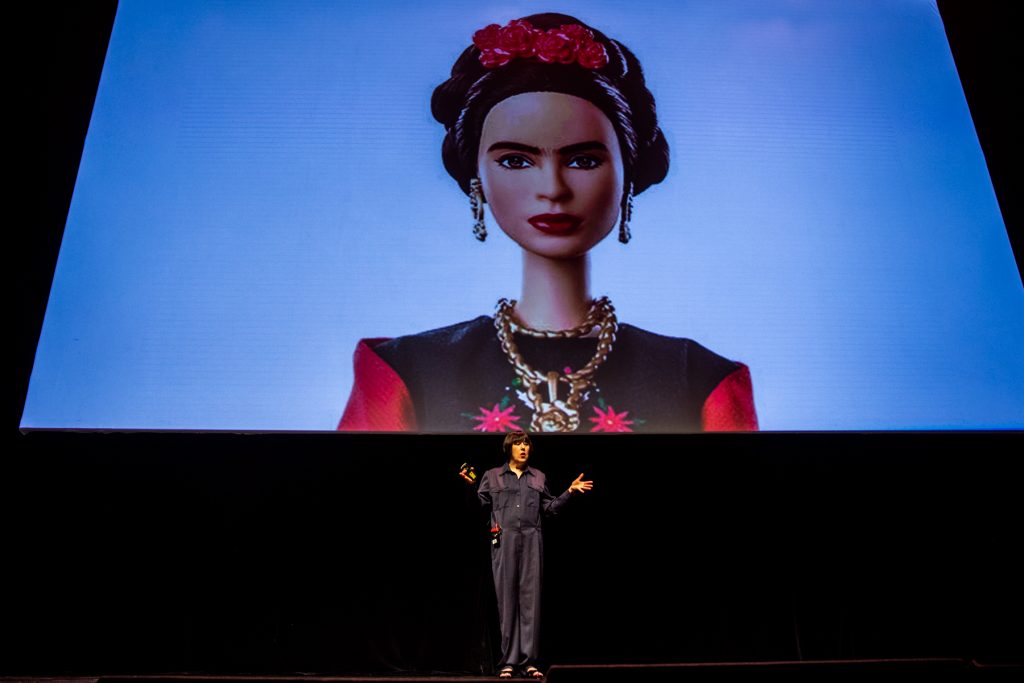Design Indaba 2020: Paul Cocksedge Unveils His Cape Town Bridge Design
The designer explains his “pillar of timber on the move” across the beautiful Liesbeek River

Paul Cocksedge, one of the UK‘s brightest designers, has garnered attention and praise for his award-winning work (from public art to architecture) and creative exploration. Though difficult to define, his designs are easy to recognize and even easier to remember. Cocksedge spoke at this year’s Design Indaba and his inspiring, energetic talk ended with the unveiling of a new project for Cape Town. Cocksedge designed a fully sustainable bridge that will be built across the beautiful Liesbeek River, about 30 minutes by car from the busy city center of the South African city.

“Ravi Naidoo and the Design Indaba team told me there’s this place in Cape Town, not too far from the city,” he says to us, after his talk. “They sent me pictures and when the first one came through it was such a contrast with what I see outside my window in London. It’s beautiful, lovely, very green. There’s fish, there’s butterflies. It was so amazing. It’s a place where people go and families gather for picnics. There’s a river and it connects two communities, but at the moment people cross it by stepping stones. Sometimes if the river floods or if the conditions aren’t right, people don’t cross.”
Naidoo suggested Cocksedge design a bridge here to help. “A bridge is a simple thing but there’s engineering, structure, teamwork, community involvement, all these different types of things you need to do to get into a successful thing like that to operate,” Cocksedge continues.

Applying their particular aesthetic and technical approach (which starts with the observation of the movements and needs of people in the area), Cocksedge and his team began to work out the concept. “I’ve just finished a project in London called ‘Please Be Seated‘ which was made out of recycled scaffolding and it was very successful. The main reason it was successful was the materiality: it had a story of recycling, it had something about reuse and people get it, but it also had a tactile quality to it, that connection to the material. Following on from that, Ravi told me that here there’s a species of alien eucalyptus tree, brought from Australia. It’s really thirsty and it takes a lot of water from the ground, starving other trees and other wildlife. It has a negative impact, but it makes very nice hardwood with great-looking shade. Our idea was to cut some trees down, take the wood and make the bridge.”

The entire production process will also be local. “When you think you have to build it, it comes with more excitement. There’s a company based here called Xlam and they perfected cross-laminated timber. They cross the grains and, by doing that, they bond the wood under high pressure and create very strong boards which can be used as walls and floors for building. So what we’re doing here, we’ll take the alien tree species, use the cross-laminated timber technique, and we’ll make the bridge.”
Beyond its function, the bridge’s form intends to be aesthetically pleasing; layers of geometrical shapes among natural surroundings. “The feeling is basically of a stack of wood exploding horizontally,” Cocksedge says. “It really feels as a pillar of timber that’s on the move, but it offers a place for people to sit and rest and enjoy the nature, enjoy the sky—very human things that we should do. So instead of just crossing and forgetting, repurposing and absorbing.”

These more intangible feelings and entities are intrinsic to Cocksedge’s work. His structures often make one think of light, wind or sound waves—quite a feat considering the materials used might be concrete, iron or hardwood. He explains, “There’s a number of times that we’ve seen a rendering or a proposal from an architect and when you experience the space in reality, you feel those elements. I think that the human body is so sensitive to innocent things like the smallest detail of the smallest shaft of light. Your projects are meant to interact with the elements.”
Getting lost in in your head is a good thing
Essentially though, his inspiration doesn’t come from one source, but the feeling of stimulation. “I don’t over-analyze in terms of my process or where ideas come from, but one thing I definitely know for sure. When I’ve been getting a lot of stimulus—whether when I listen to music or maybe have a bit of alcohol—that’s when I think clearer actually. I don’t know why. When I look at some people and they go to work, sit down and they say, ‘I’m going to be creative,’ that would be my worst nightmare! I need a bit of music because it’s taking my brain over here. But as I’m going that way, I could get this job done. It’s just fascinating. Getting lost in in your head is a good thing.”

His complex, unique and seemingly ever-changing process means it can be difficult to describe his projects before they come to life. He tells us, “I do drawings, I enjoy them but I’m not sure what they mean to anyone else. My iPad records the drawing process and this is quite flippant. Before, we would just show the idea, but renderings are so soulless and people just criticize and they judge it. Whereas when you show someone the sketch, the process, they go, ‘Wow!’ And that’s where—as designers, artists and creatives—we have skills. We need to show that it’s not easy to do what we do. We need to show the journey.”
Hero image courtesy of Cocksedge Studio












